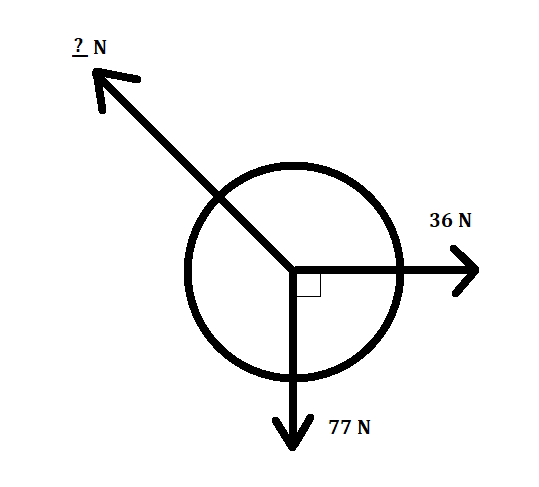How is slope calculated?
Rise over Run, or (Delta y)/(Delta x)
A ball rolls straight down the hallway for 3 seconds at a velocity of 15 meters per second before hitting the wall. What is the acceleration of the ball during this time?
Zero!
On the moon, which object drops to the ground faster, a hammer or a feather?
They hit the ground simultaneously!
If I drop a rock off a cliff, and graph the velocity that it has over time, what value will I get and what does the slope of that graph represent, specifically?
The acceleration of objects due to gravity = 9.8 m/s^2
True: we only treat them differently because gravity is a vertical force, and there isn't a force in the horizontal direction to cause acceleration in that direction.
If 20 students are in class, but the teacher counts only 17, what is the percentage error of that measurement?
Hint: Percentage error =
(True value - Calculated)/(True Value) * 100%
(20-17)/20 * 100% = 15%
What is the net force on an object that is experiencing a force of 20 N north, 20 N east, 20N south and 20N west?
0!
This quantity is what we use to measure inertia.
Mass
A car drives 100 km in 2 hours, and then 50 km in 3 hours. What was the average speed of the car?
(100+50)/(3+2) = 30 km/hr
You roll a bowling ball at 10
m/s
and it rolls horizontally off a cliff of height 45 meters. How much horizontal distance does it get before hitting the ground?

30 meters
What is the equation of the line shown below?

Y = -1.5X + 8
True or False: An object in motion can still be said to be in equilibrium, depending on how it is moving.
True, equilibrium means motion is constant, not necessarily zero. If the velocity doesn't change, no net force is acting on it.
A ball with a mass of 5 kg is dropped from a building at hits the ground in 3 seconds. How long will it take for a ball with a mass of 15 kg to make the same trip down?
The same 3 seconds!
On a certain road trip, we drive at 80 km/hr for 2 hours, then 40 km/hr for 3 hours, and then 100 km/hr for an hour. What was the average speed of the trip?
80*2 + 40*3 + 100*1 = 380 km
380/6 = 63.3 km/hr
A ball is thrown in the air and lands back on the ground in 3.5 seconds. How high did it get at the top of its arc?

3.5 / 2 = 1.75 sec up, and 1.75 sec down
h = 1/2 * 10 * 1.752
h = 15.3 meters
What is the average velocity of this object during the first 5 seconds of the trip?

1 m/s
This object is subject to three forces, one horizontal, one vertical and one diagonal. The net effect of the forces is that the object is sliding along the floor at a constant speed. What is the magnitude of the diagonal force?

Equilibrium means forces = 0, so:
362 + 772 = 852
F = 85 N
True or false: Big, heavy trucks on the road have a harder time speeding up, and an easier time coming to a stop, because of their massive inertia.
False: their large inertia makes speeding up and slowing down equally more difficult.
80 = (1/2) * 10 * t^2
t = 4
V = gt = 4*10 = 40 m/s
What is the horizontal distance travelled by this projectile before hitting the ground again.

160 meters
This is a velocity over time graph. What is the average acceleration over 5 seconds of the object that underwent this velocity graph?

2 m/s2
What is the total net force on this object, and in what direction does it travel?

48 - 20 = 28 N west
143 - 98 = 45 N south
sqrt(45^2 + 28^2) = 53 N
53N south-west
True or False: According to Newton's 1st law, if a net force acts on an object, its speed must either be increasing or decreasing.
False: If it's direction is changing, that is a form of acceleration as well.
A new basketball player is wowing audiences with his 1.25 meter high jump, a new record! What is the amount of time he stays in the air during this jump, his "hang time?"
1.25 = (1/2)*10*t^2
t = 0.5 second
Total time = 2*0.5 = 1 second.
A football quarterback throws a long pass to a receiver standing 20 meters away, which they catch 2 seconds after the ball was thrown. What is the total velocity of the ball when it was thrown?
Y-velocity:
T = 2, 1 second up and 1 second down
Vy = g * t = 10 * 1 = 10 m/s
X=velocity
V = d/T = 20/2 = 10 m/s
Total velocity:
sqrt((Vx)2 + (Vy)2 )= 14.4 m/s